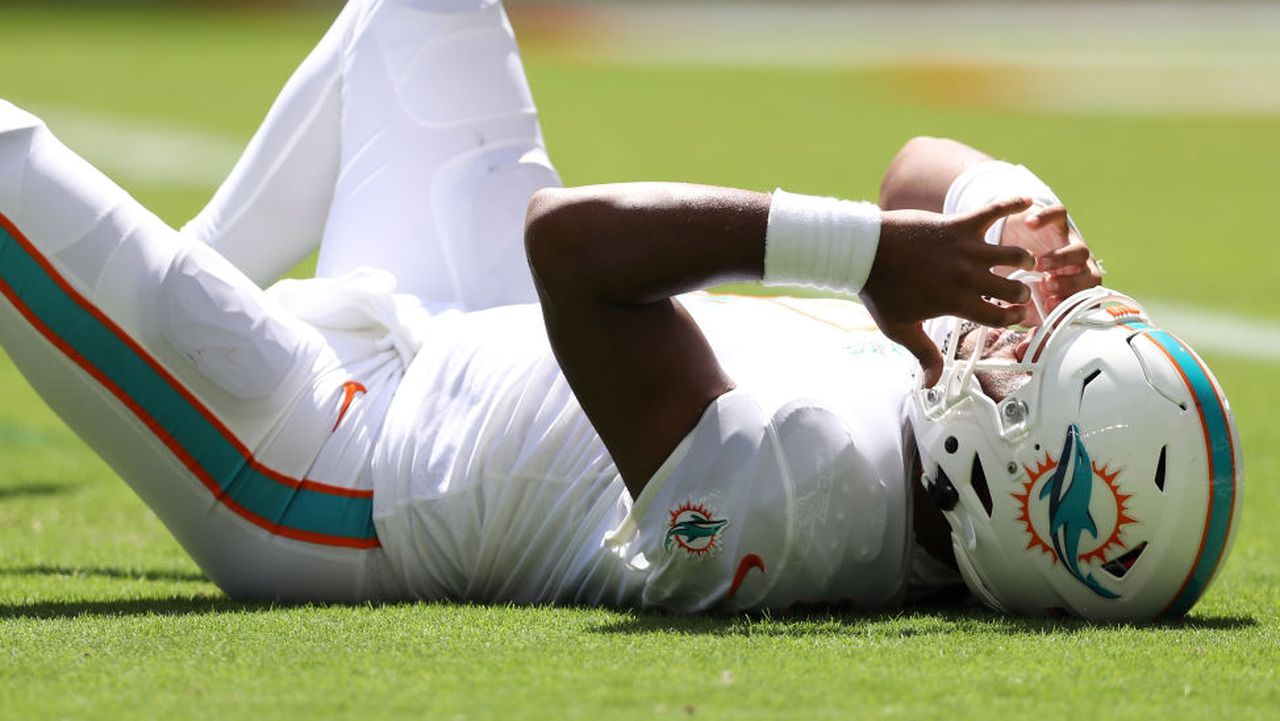NFL releases results of Tua Tagovailoa investigation
The NFL and NFL Players Association found that the league’s concussion protocol was followed after Miami Dolphins quarterback Tua Tagovailoa was injured during a Sept. 25 game against the Buffalo Bills. But because “the outcome in this case was not what was intended when the protocol was drafted,” the procedure has been changed.
On Sept. 25, the back of Tagovailoa’s helmet bounced off the turf when he took a roughing-the-passer hit with two minutes left in the first half against the Buffalo Bills. Unsteady getting to his feet, the former Alabama All-American stumbled to the ground after a few steps and was sent off the field.
· DOLPHINS HAVE NO PLANS TO PUT TUA TAGOVAILOA ON IR
· BRIAN ROBINSON JR. READY TO PLAY 6 WEEKS AFTER BEING SHOT
· RUDY FORD CONTRIBUTES FOR PACKERS IN UNEXPECTED WAY
Tagovailoa’s behavior is listed among the signs of a potential concussion in the NFL guidelines, specifically “stumbles” and “trips/falls,” perhaps to the point of gross motor instability, a “no-go” symptom in the league’s head-trauma plan that calls for the immediate removal of the affected player to the locker room, which is what happened to Tagovailoa.
But when the second half started, Tagovailoa was back at quarterback for the Dolphins and helped them rally for a 21-19 victory. In the locker room, Tagovailoa had passed his concussion test, and he later told reporters his momentary balance issue was the result of a back injury suffered earlier in the first half.
A club physician and an unaffiliated neurotrauma consultant examined Tagovailoa before he returned to the game. The game was barely over when the NFL Players Association requested an investigation to determine if all the safety barriers had been properly followed in allowing Tagovailoa to play in the second half.
On Saturday, the NFL and the NFL Players Association released the results on the investigation.
In clearing Tagovailoa, the Dolphins’ medical team and the unaffiliated neurotrauma consultant followed the concussion procedure step-by-step before clearing the quarterback to return to play, the investigation found.
They viewed video of the play, but Tagovailoa did not report or exhibit signs of a concussion during the locker-room examination (and did not after the game either). The quarterback told his examiners that his stumble had been caused by the aggravation of a back injury sustained earlier in the game.
The medical team determined the instability was not neurologically caused and agreed with Tagovailoa’s explanation. But the locker-room physicians did not examine Tagovailoa’s back and instead relied on the earlier examination conducted by other members of the Dolphins’ medical staff.
In reaction to the investigation, the NFL and the NFL Players Association have agreed to a change in the concussion protocol.
The term ataxia has been added to the mandatory no-go symptoms, with ataxia defined as “abnormality of balance/stability, motor coordination or dysfunctional speech caused by a neurological issue.”
A player diagnosed with ataxia by any club or neutral physician in the application of the concussion protocol will be not be able to return to the game.
After the controversy caused by the Sept. 25 game, Tagovailoa sustained an undeniable concussion in Miami’s game against the Cincinnati Bengals on Sept. 29.
Tagovailoa remains in the concussion protocol and will not play in the Dolphins’ game against the New York Jets on Sunday.
FOR MORE OF AL.COM’S COVERAGE OF THE NFL, GO TO OUR NFL PAGE
Mark Inabinett is a sports reporter for Alabama Media Group. Follow him on Twitter at @AMarkG1.
